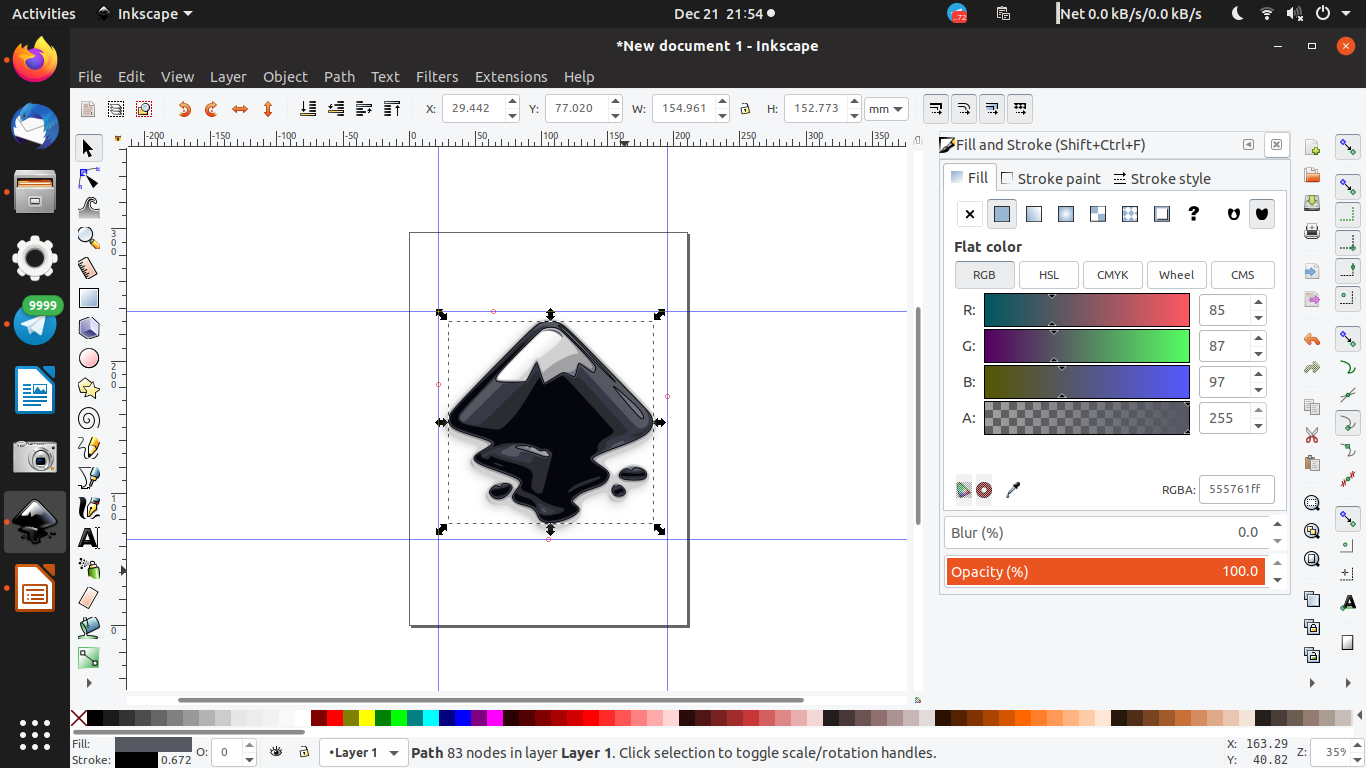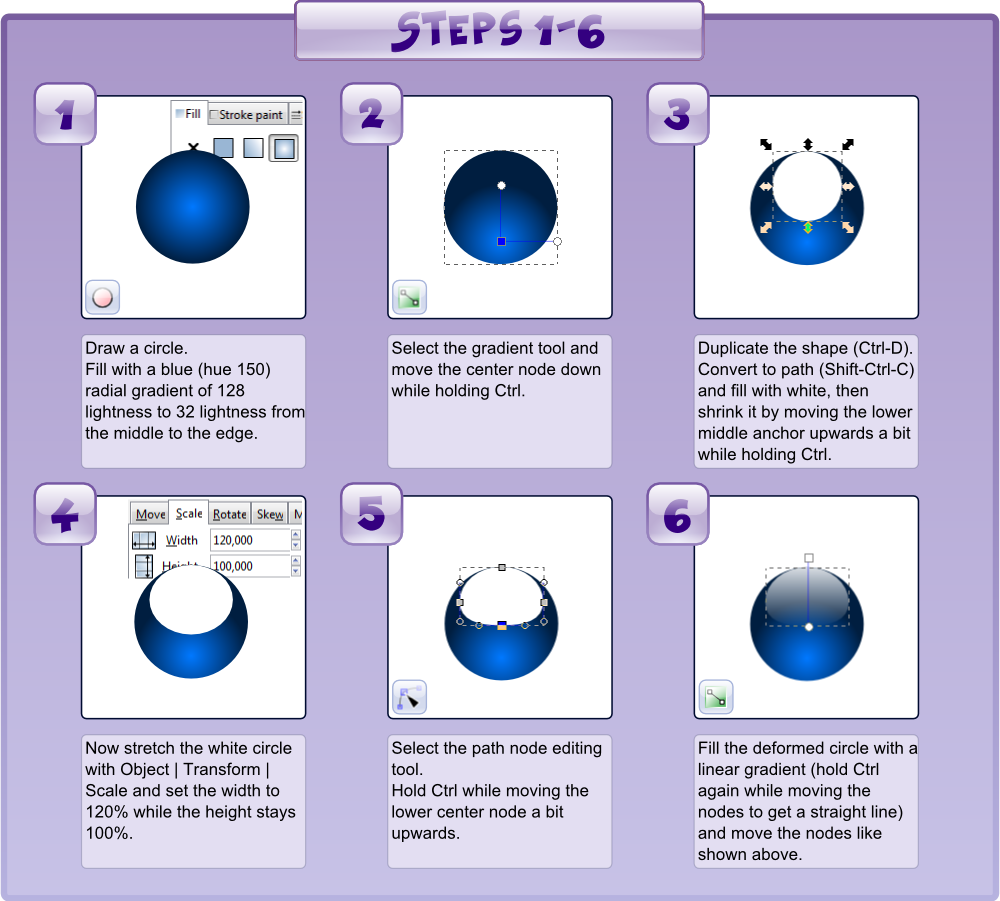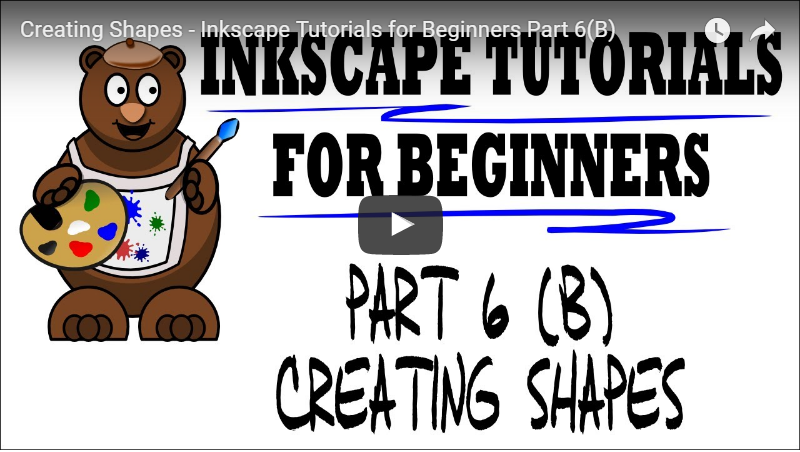

Inkscape in Practice / Inkscape w praktyce on GNU FDL licence / na licencji GNU FDL (pl).Video tutorials / Filmiki szkoleniowe (pl).Videotutorial Inkscape Tre strumenti di creazione dei tracciati (it).Videotutorial Inkscape Le estensioni 4 (it).Videotutorial Inkscape Le estensioni 3 (it).Videotutorial Inkscape Le estensioni 2 (it).Videotutorial Inkscape Le estensioni 1 (it).Videotutorial Inkscape Allineamento e distribuzione (it).Videotutorial Inkscape Duplicazione e Clonazione (it).Videotutorial Inkscape Tracciati 2 (it).Videotutorial Inkscape Tracciati 1 (it).Videotutorial Inkscape Riempimento e contorni degli oggetti (it).Videotutorial Inkscape Interfaccia di Inkscape (it).Flourish e Cloni in serie- Utilizzo Cloni (it).Creare una prospettiva con Inkscape-Utilizzo delle linee Guida (it).Dadi con Inkscape-Utilizzo Griglia assonometrica (it).Guida al web design - Tutorial Inkscape (it).Liste des didacticiels du blog de Popolon (fr).Comment faire une illustration de A à Z avec inkscape.FLOSS Manualsin suomenkielinen Inkscape-käyttöopas.Tutorial zu Kartografie mit Inkscape (de).Spiro Swirls - Create flourishes and swirls in Inkscape using the new Spiro option, by Syllie of (en).
ADVANCED INKSCAPE TUTORIALS HOW TO
Drawing Volumetric Objects in Inkscape - How to draw 3D objects with all the right reflections and shadows (en).Acrylic Photo in Inkscape - How to create an acrylic-looking picture from a photo using GIMP and Inkscape.
ADVANCED INKSCAPE TUTORIALS MAC

When you first click, a square will appear at the end of your line, this is our beginning and end point of our shape. To begin drawing, select the drawing tool from the toolbar, or press the B key on your keyboard. If one area is completely white then map out that area.ĥ. To help yourself see less tonal values and help distinguish areas of similar colour, you can try squinting your eyes at the image. If one area is a similar shade of brown, then make one shape that fits that area.

Rather than having a seemingly infinite array of tones and gradients (as in a photograph), we will make shapes that correspond to similar colour areas. We will be simplifying the image by limiting the number of colours. Colour blocking is the process of separating different colour areas like what we saw in our colour-by-number.

It is important to observe and notice the differences between light and dark areas, as this is what will give our image dimension. We will be building our shapes based on areas of similar tones and colours. Leave this layer unlocked, as this is where you will be drawing. Make a new layer by clicking on the + or pressing Shift+Ctrl+N A menu will pop up where you can name your layer and choose the layer position.


 0 kommentar(er)
0 kommentar(er)
